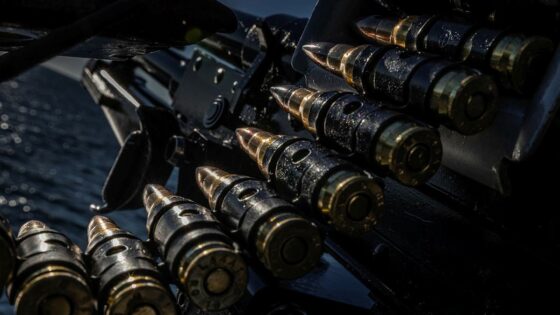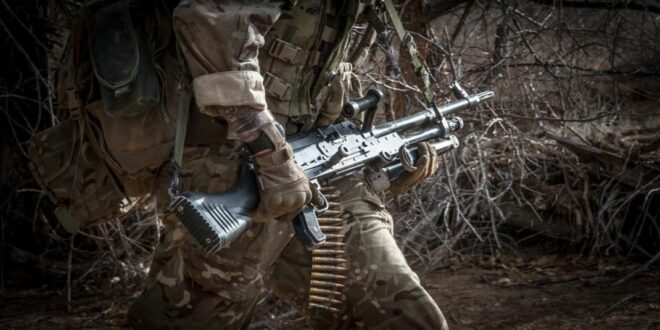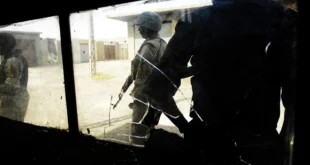For nearly 60 years, the General Purpose Machine Gun has been the go-to weapon of choice for the British military and it is still in service to this today.
The General Purpose Machine Gun (GPMG) was brought in after World War Two to replace the Vickers Heavy Machine Gun and the Bren Light Machine Gun.
It is currently being used by more than 80 different countries worldwide, making it one of the most popular machine guns in the world.
Loved for its accuracy and reliability on the battlefield, the GPMG is used by all three British armed services, in the air, on land and at sea.
Why is the GPMG so popular?
Due to its simple design – being a belt-fed, gas-operated gun – its durability can withstand the most extreme conditions, proven during operations in the desert and for Arctic warfare.
The GPMG is most commonly used mounted on vehicles, helicopters, boats and fixed locations, such as sentry positions. Having the GPMG fixed gives it much more accuracy.
READ MORE about British Army equipment
It usually comes with two quick-change spare barrels, for when the first becomes too hot – during lengthy battles, GPMG barrels have been known to get so hot, they melt.
When the GMPG is mounted, operating it becomes a two-person job, one to fire the gun and make any adjustments, the other person to load the ammunition belts and change barrels.
What calibre is the General Purpose Machine Gun (GPMG)?
The machine-gun fires the standard 7.62x51mm Nato round – capable of penetrating through soft-skin vehicles (non-armoured cars) and even brick walls.
Other names for the GPMG
The original manufacturers name for the GPMG is Fabrique Nationale MAG or FN MAG (Mitrailleuse d’Appui General) – meaning ‘general support machine gun’.
It is known as the L7A2 General Purpose Machine Gun (GPMG) to the British Armed Forces, aka ‘The General’ and the ‘Gimpy’ or ‘Jimpy’.
Who made the GPMG?
It was designed and built in Belgium in the early 1950s under the direction of Ernest Vervier.
The weapon was heavily influenced by the German World War 2 MG42. The first GPMG off the production line was in 1958 and they are still making them today. It is thought to be one of the most versatile machine guns ever designed and built.
The GPMG can be used in the Sustained Fire (SF) role, which requires a two-person team to operate the gun correctly.

When the gun is mounted, the stock is removed and a C2 optical sight is added.
In the SF role, the GPMG is used as a fire support weapon, providing overhead fire, or flanking fire, in support of advancing troops during offensive operations against the enemy.
It can also be carried in the light support role, with the user wearing a carrying shoulder strap.
It has been known for exceptionally strong people to be able fire the GPMG from the shoulder in the standing position. Although the accuracy can be severely reduced, it can sometimes be a necessity, however, when laying down suppressive fire, when operating in the jungle or tall grass and visibility is impaired when lying in the prone position.
The gun can also be used to provide a form of air defence, against low-flying attacking aircraft.
Who uses the GMPG?
The current model used by the British military is the L7A2. However, there are many other variants of it, including vehicle-mounted and the remote fire.
All three services of the British Armed Forces use it in varying roles to suit their needs.
The UK managed to obtain a licence to produce the GPMG, initially by Royal Small Arms Factory at Enfield Lock and now currently by FN Herstal UK (formerly Manroy Engineering).
Argentina also locally produces the weapon under licence – it is called the Ametralladora Tipo 60-20 MAG – which was used against the British Army in 1982 during the Falklands War.
– British Forces Net
 Soldier of Fortune Magazine The Journal of Professional Adventurers
Soldier of Fortune Magazine The Journal of Professional Adventurers






